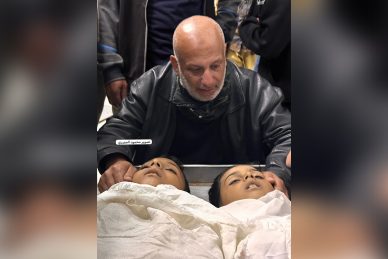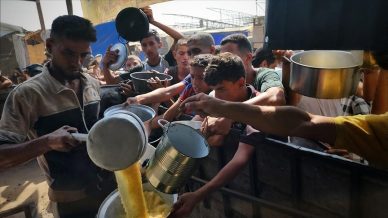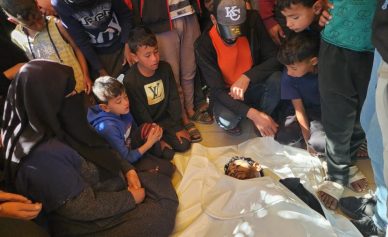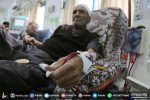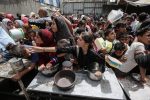GAZA, (PIC)
While Muslims around the world celebrate the blessed Eid al-Adha, the residents of the northern Gaza Strip groan under the weight of the ongoing famine, as they call out in a loud voice: Stop the starvation of the north.
There is nothing to eat but a little bread crumbs, and a few canned goods at very high prices, amidst a mysterious global silence.
Israel uses hunger as one of the weapons in the ongoing genocide in Gaza, which has so far claimed the lives of 40 Palestinians, and thousands suffering from malnutrition and severe wasting.
Details of the famine
Palestinian journalist Imad Zaqout revealed the details of the famine striking the northern Gaza Strip, due to the ongoing Israeli siege and the concurrent ongoing genocide.
Journalist Zaqout, who lives in the north of the Strip, said in a tweet on the “X” platform: “We answer you here about the ‘recurring question: How is the situation in northern Gaza?'”
He added, “Only flour and a limited quantity of canned goods enter the northern region, and this is not enough at all, because the rest of the other food components are not available, and here we are talking about vegetables and meat, as for fruits, they are non-existent, and I mentioned them for clarification because some may consider them a luxury.”
He continued, “The people here in northern Gaza live on flour and a few canned goods, and according to nutritionists, consuming canned goods has a negative long-term effect on human health due to the preservatives they contain.”
Zaqout pointed out that “instead of the fear and terror they suffer, the children do not find the basic nutritional elements such as milk and eggs, and pregnant women also suffer greatly in nutrition and health care.”
He concluded, “And let us not forget the patients and the wounded who face the risk of death every minute due to the lack of nutrition and health care due to the absence of clinics and hospitals that provide them with health security.”
Regarding water, he said, “We do not know its nature or how to treat it, and as is known to all, more than 95% of the water is polluted and unfit for drinking.”
Life in the shelters
Regarding life in the shelters, Zaqout wrote, “As for the shelters, this is a long story, for the people here are suffering greatly in order to find a place to take refuge after approximately 80% of the homes and houses in northern Gaza were destroyed. Even the shelters, such as hospitals, clinics, and schools, were targeted by the occupation forces intensively over the months of the war, so our people cannot find what to shelter them after this terrible destruction, and they cannot even find tents.”
Regarding energy sources, he said in his tweet, “This has become a dream, because from the first days of the war, the occupation (army) destroyed the entire electricity network and left nothing of it. There is a limited number of people who resorted to alternative energy, but even that was largely destroyed in the continued targeting of citizens’ homes during the military operations that targeted the northern Gaza areas.”
He concluded saying, “I do not want to repeat the talk about the health situation and hospitals, because it is now known to everyone that the health system is dilapidated and provides only a little primary care.”
Acute food insecurity
Nine out of every 10 children in the Gaza Strip suffer from acute food insecurity and live on two or fewer food groups per day, according to a report by UNICEF on June 6, based on five rounds of data collected between December 2023 and April 2024.
Furthermore, the Famine Early Warning Systems Network (FEWS NET) indicated that the Israeli military operation in Rafah had disrupted food distribution channels and reduced access to food.
Dangerous levels
The spokesperson for the World Food Program in the Middle East, Abeer Attieh, said that food security in the Gaza Strip is approaching dangerous levels, and famine has begun to take root in the northern part of the Strip again.
Attieh noted in a press interview that famine has returned to northern Gaza amid the strict and tight closure of the Strip’s crossings as a result of the continued Israeli military operation in Rafah.
According to local data, 40 citizens, mostly children, were martyred as a result of the famine that hit the northern regions in particular, while 3,500 children are threatened with death due to acute malnutrition.
She explained that the precise figures indicate that the citizens lack the necessary basic food needs, and the aid does not reach them to the extent that prevents famine from occurring.


